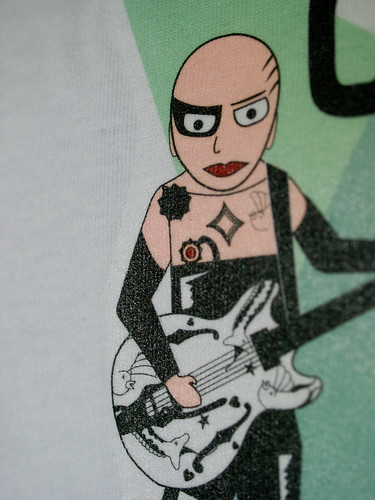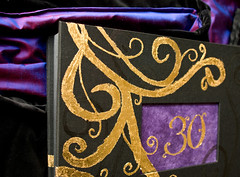 Q: Why are you using iron-ons? Why not get it screen printed, which is MUCH higher quality?
Q: Why are you using iron-ons? Why not get it screen printed, which is MUCH higher quality?
A: As a graphic artist, I've dealt with screen printing and digital prints many times. Screen printing does tend to last longer and require less specialized care, however it does have some specific limitations. The design I drew would not be able to be printed as a screen printed design due to these limitations, and since most people are not aware of these limitations, I will do my best to fill you in.
The first and most important limitation is that of multiple colors. In screen printing, each color requires a separate screen. Each screen requires setup and also requires more money to add. A full color design like mine would have to be greatly simplified in order to reduce it to 4-6 colors.
The second limitation is one called mis-registration. For those of you out there scratching your heads over what that means, it is pretty straightforward. For each screen, you have to perfectly align the next color with the last color. This is called registration. The more colors you have, the more exact you must be with registration. Most screen-printed designs have some overlap built into the design in
order to account for small mis-registration errors, but I did not design this to be screenprinted, and therefore, there aren't any tolerances in it for mis-registration.
With multiple colors and multiple screens also comes the problem of patterning, rosettes and moire. These are patterns common in multiple-color screened designs.
Finally, there comes the problem of fine lines, such as the ones on Porl's guitar. Fine lines are very difficult if not impossible to reproduce properly in screenprinting.
The other option after screenprinting is called direct digital printing. This is where the design is fed through a machine similar to an inkjet, and the design gets printed directly onto the fabric. The main problem with this technology is that it
is fairly new, so it is much more expensive, due to the machines that produce it.
Finally, we have good old heat transfer, or what is known as iron-ons. There are many companies out there producing heat transfer products, most full-color designs these days are heat transfers. Iron-ons have a bad reputation due to limitations in the older technology, but they have come a long way, and to me, they are the best option for a design such as mine. I have quite a few heat transfer design teeshirts, and while they are not quite as long lasting as screen-printed shirts, the technology is now much better than it was even 5 years ago. Cafepress, in particular, has made millions of heat-transfer products. To me, they preserve the color and detail in digital prints without the limitations inherent in screenprinting, and are much better environmentally due to the solvents and waste in screenprinting. So, that's why I've chosen to use this technology in my shirts.
Monday, July 7, 2008
Screen printing vs. digital printing vs. digital heat transfer
Subscribe to:
Post Comments (Atom)













1 comments:
I plan to dabble into some screen printing, personal clothing projects, next yr and this was extremely helpful; thanks alot!
-Sasha :)
Post a Comment